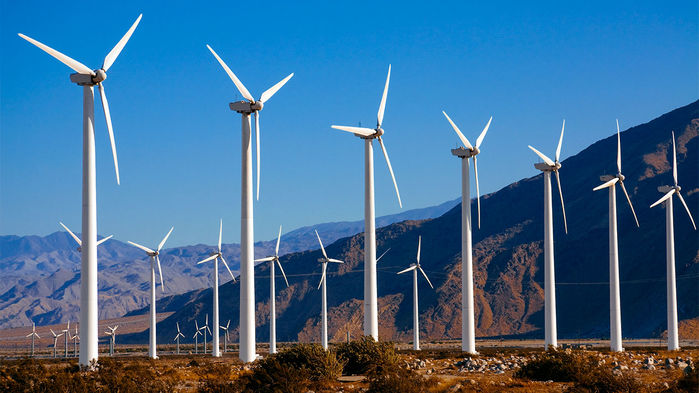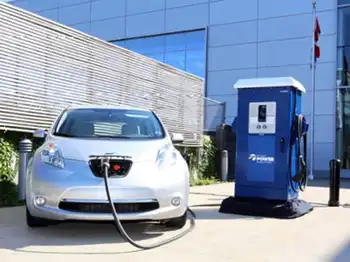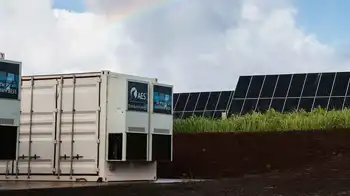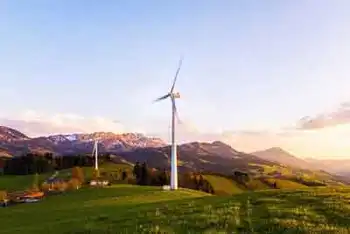Spain Breaks Gas Link with Wind and Solar

Substation Relay Protection Training
Our customized live online or in‑person group training can be delivered to your staff at your location.

- Live Online
- 12 hours Instructor-led
- Group Training Available
Spain has broken its reliance on fossil gas as soaring wind and solar energy drive Europe’s lowest wholesale electricity prices, reducing emissions, stabilizing the grid, and advancing renewable power, energy independence, and clean transition goals across the EU.
How Has Spain Broken the Gas Link with Wind and Solar??
Spain has broken the link between gas and power prices by rapidly expanding wind and solar generation, which now supplies nearly half its electricity, cutting fossil fuel influence by 75% since 2019 and reducing power costs 32% below the EU average.
✅ Wind and solar cut fossil influence by 75% since 2019
✅ Power prices 32% below EU average in 2025
✅ Renewables meet nearly half of national electricity demand
Spain has emerged as one of Europe’s most affordable electricity markets, largely due to its rapid expansion of wind and solar power. By decoupling its wholesale electricity prices from volatile fossil gas and coal, Spain has achieved a 32 percent lower average wholesale price than the EU average in the first half of 2025. This remarkable shift marks a dramatic turnaround from 2019, when Spain had some of the highest power prices in Europe.
According to new data, the influence of fossil fuels on Spain’s electricity prices has fallen by 75 percent since 2019, mirroring how renewables have surpassed fossil fuels in Europe over the same period, dropping from 75 percent of hours tied to gas costs to just 19 percent in early 2025. “Spain has broken the ruinous link between power prices and volatile fossil fuels, something its European neighbours are desperate to do,” said Dr. Chris Rosslowe, Senior Energy Analyst at Ember.
The change is driven by a surge in renewable generation. Between 2019 and mid-2025, Spain added more than 40 gigawatts of new solar and wind capacity—second only to Germany, whose power market is twice the size. Wind and solar now meet nearly half (46 percent) of Spain’s electricity demand, compared with 27 percent six years ago. As a result, fossil generation has fallen to 20 percent of total demand, well below the levels seen in other major economies such as Germany (41 percent) and Italy (43 percent).
This renewable growth has also cut Spain’s dependence on imported fuels. In the past five years, new solar and wind plants have avoided 26 billion cubic metres of gas imports, saving €13.5 billion—five times the amount the country invested in transmission infrastructure over the same period. The Central Bank of Spain estimated that wholesale electricity prices would have been 40 percent higher in 2024 if renewables had not displaced fossil generation, and neighboring France has seen negative prices during periods of renewable surplus.
August 2025 marked a historic milestone: Spain recorded a full month without coal-fired generation for the first time. A decade earlier, coal accounted for a quarter of the nation’s electricity supply. Gas use has also declined steadily, from 26% of demand in 2019 to 19% this year.
However, the system still faces challenges. Following the April 28th Iberian blackout, Spain has relied more heavily on gas-fired plants to stabilize the grid. These services—such as voltage control and balancing—have proven to be expensive, with costs doubling since the blackout and accounting for 57 percent of the average electricity price in May 2025, up from 14 percent the previous year. Curtailment of renewables has also tripled, reaching 7.2 percent of generation between May and July.
Despite being Europe’s fourth-largest electricity market, Spain ranks only 13th in battery storage capacity, underscoring the need for further investment in clean flexibility solutions, such as grid-scale batteries to provide flexibility and stronger interconnections. Post-blackout reforms aim to address this weakness and ensure the gains from renewable integration are not lost.
“Spain risks sliding back into costly gas reliance amid post-blackout fears,” warned Rosslowe. “Boosting grids and batteries will help Spain break free from fossil dependency for good.”
With record-low electricity prices and one of the fastest decoupling rates in Europe, Spain’s experience demonstrates how large-scale wind and solar adoption can reshape energy economics—and offers a roadmap for other nations seeking to escape the volatility of fossil fuels.











